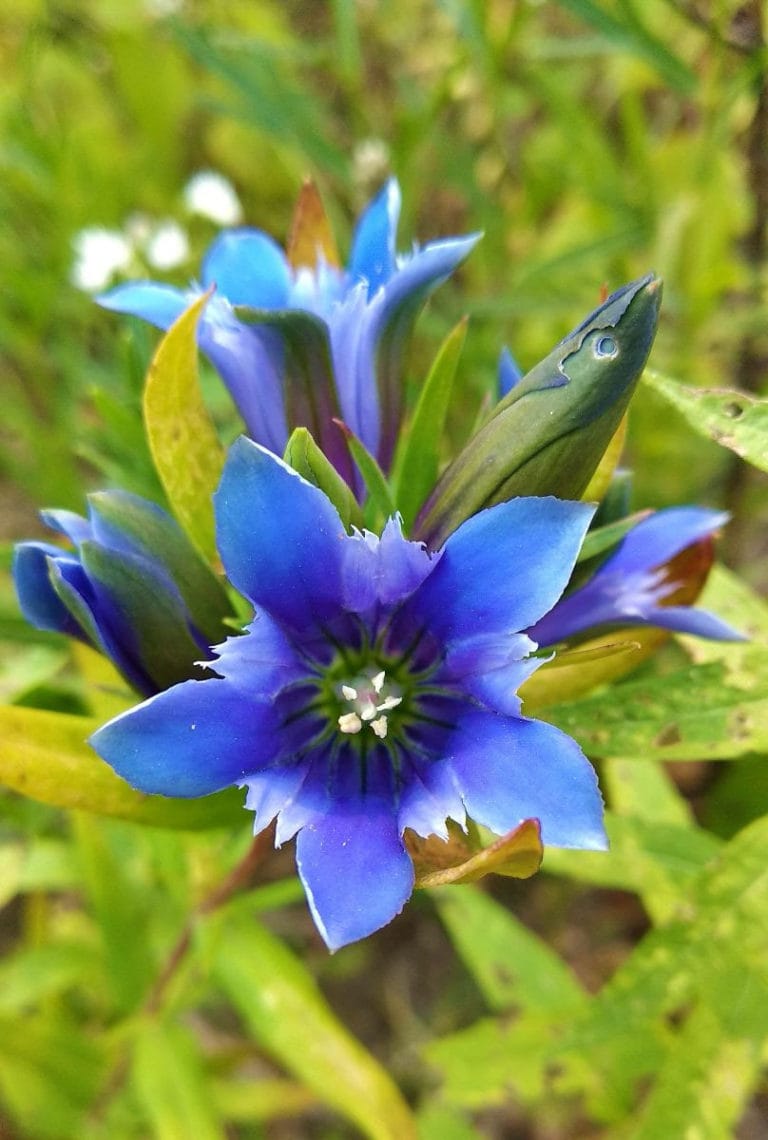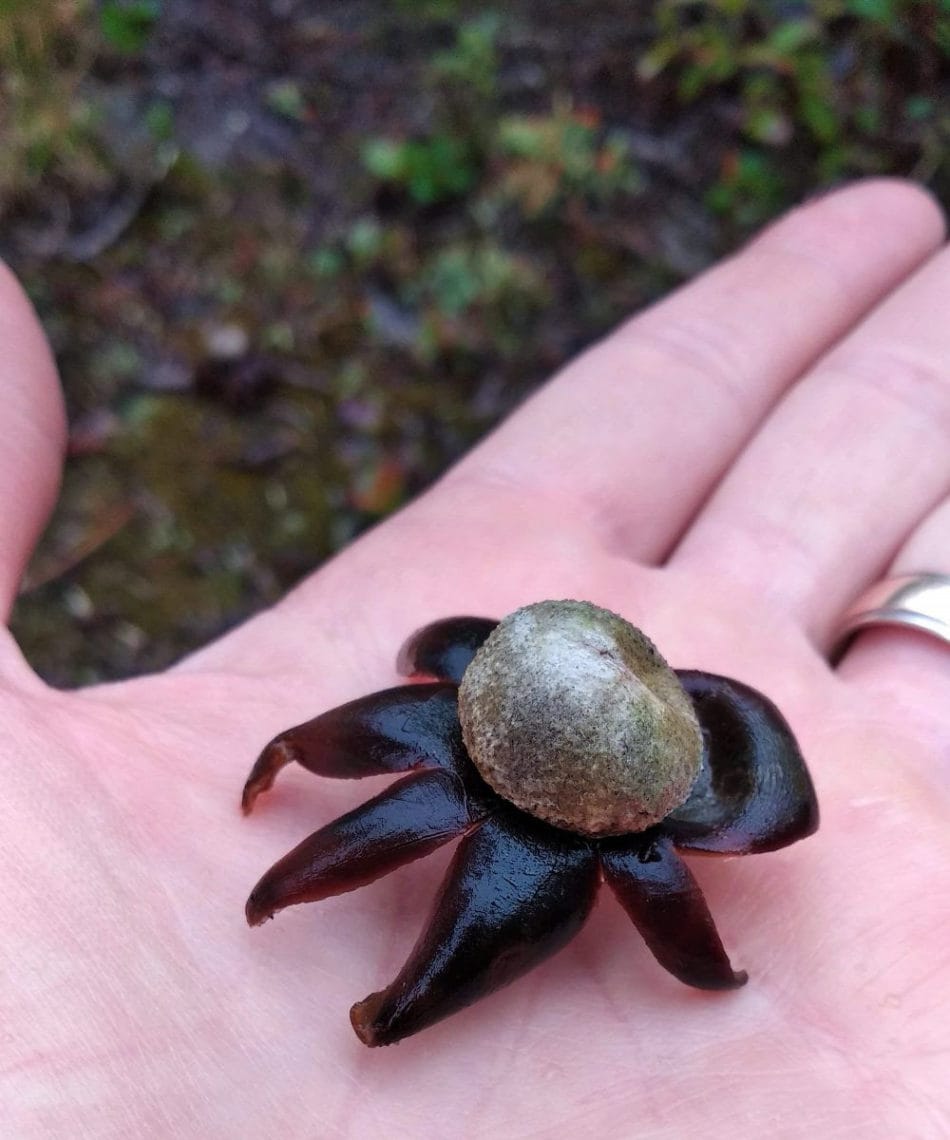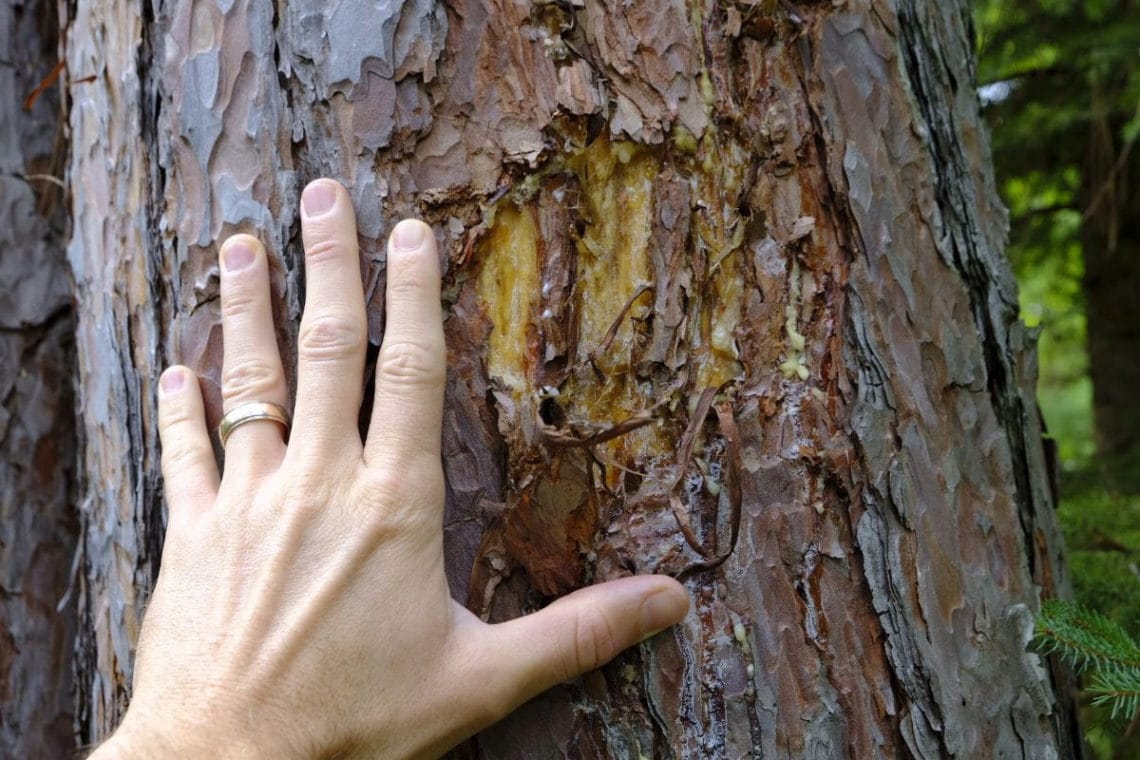Happy first official week of fall! While I’m excited for cooler temperatures, colorful leaves, and apple picking, I feel like I’m not quite ready for summer to be over. Neither are the last of my almost ripe tomatoes desperately clinging to their vines in my garden!
The transition from summer to fall is always an interesting time of year, so let’s see what’s happening outside as our days slowly get cooler and shorter.
This time of year goldenrods and asters are in the spotlight. Their gold and purple colors can be seen carpeted across natural areas. While these late summer and early fall flowers can be breathtaking, one of my favorites that blooms this time of year is downy gentian (pictured above).
You’ll need to search in drier soils if you want to find downy gentian. It also helps to have a nice sunny day since these flowers close up in the evening when it cools down and when it’s cloudy. The deep blue-violet color is enhanced even further with the brownish green vegetation that surrounds it.
This time of year, insects are still very plentiful. A lonesome monarch might be found flitting around, bees can be seen napping in flowers, and crickets are still filling the evening air with song. On a recent hike out at Westport Prairie, my son Jay found this terrifying creature (pictured above).
I have to admit that I was too scared to pick up an insect with what looks like an enormous sewing needle on the back end of it. Without hesitation my son picked it up and put it on his shirt while walked around looking for flowers (I’m not sure where he gets that from).
The bug was a straight-lanced meadow katydid (very fitting name) which we later identified at home with our insect identification book. Apparently, the ‘lance’ is an ovipositor making this particular insect a female. She uses the ovipositor to help bury her eggs in the soil. I’m less scared now, but still not picking it up.
I recently took a trip up north with my family and we went on a few hikes like we usually do. On one of the hikes, we found this odd alien-looking thing next to a log. I figured it was a mushroom of some sort, but I’m terrible at identifying mushrooms so I took a picture of it and uploaded it to my nature identification app. The app said it was a crab… It was very much NOT a crab, so I did more research (here’s a friendly reminder to not always trust your app).
It turns out that it was a hygroscopic earthstar. Aside from being a great band name, hygroscopic earthstars are a type of mushroom that open up with increased moisture in the air (and close when it’s dry). When opened, raindrops land on the round center ball of the mushroom, causing puffs of spores to come out. The ‘legs’ even curl under the mushroom to elevate it off of the ground so that spores can be swept away with the wind. HERE is a time-lapse video of one opening and closing.
|
|




